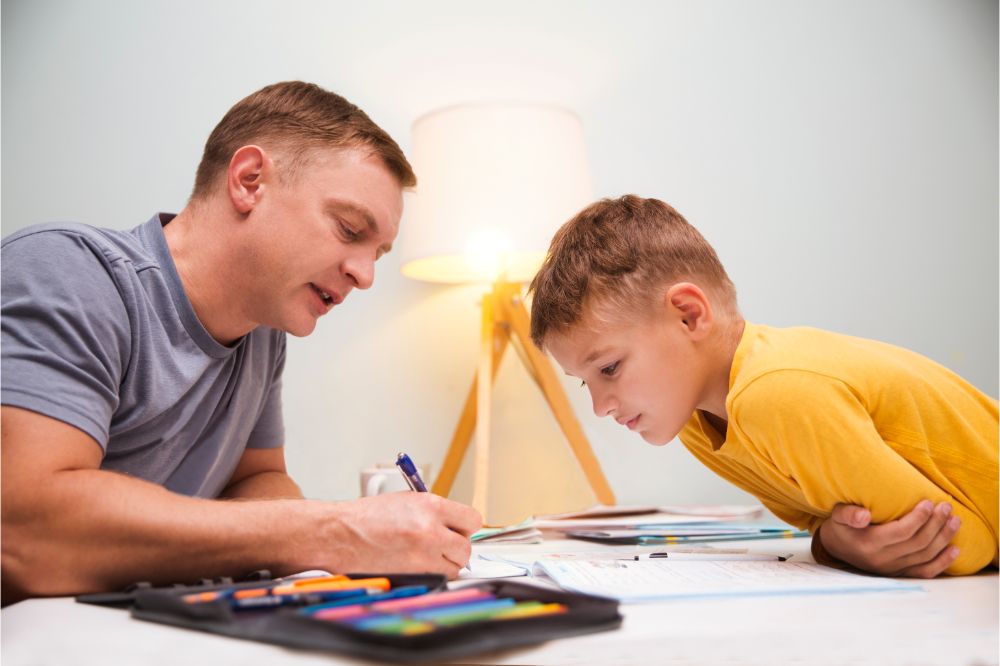A curriculum can provide structure and guidance for both the parent and the student. Some states even have specific requirements for what should be covered in a history curriculum. However, many alternative, effective ways to teach homeschool history without a curriculum exist, particularly in a homeschool setting.
However, it is not a must when teaching homeschool history. A curriculum is just one of many resources that can be used to teach history, and it can be modified or adapted to suit the student’s needs.
You can choose from different methodologies, or you can mix and match. Additionally, many resources are available for teaching history that do not come in the form of a curriculum, such as primary sources, historical fiction, and documentaries.
Assess the Student’s Need
It is certainly possible to teach homeschool history without a curriculum. In fact, many homeschooling families choose to create their own methods or use a combination of resources to meet their children’s unique needs and interests.
The most crucial factor in homeschooling history is the student’s engagement and excitement about learning. So, you can also design your curriculum based on the student’s interest and use other sources to make the learning more interesting and engaging.
It’s also important to remember that history is vast and complex, so you may want to focus on specific periods or themes. The most important thing is to find the best resources for you and your child and have fun exploring history together.
Different Approaches to Teach History Without a Curriculum
History can be taught in various ways without following a predefined, restrictive curriculum. But your choices should be geared toward making the learning environment more enjoyable and eliminating the misconception that learning history is always dull.
Here are some different approaches how to teach homeschool history without a curriculum:
Making History Books a Part of Your Homeschool
Create an engaging learning environment by providing a selection of history-centric books, both fiction and non-fiction, that ignite curiosity and inspire kids to learn more about history.
It may include biographies, encyclopedias, history-themed coloring books, and historical novels or comics. You can also add accessories such as posters or other graphics that contain information about historical figures or fascinating events in the past.
Pick the relevant materials and display them in accessible locations throughout the house where your homeschooler can easily find and engage with the objects. When their curiosity grows, the desire to learn will eventually follow. Easy access to different resources also allows homeschoolers to learn independently.
Here are some interesting books that can be used to teach homeschool history:
- Timelines of World History – Jane Chisholm
- Major Events in American History: 50 Defining Moments from Pre-Colonial Times to the 21st Century (People and Events in History) – Megan Forbes
- Getting to Know the World’s Greatest Inventors & Scientists (history series include influential figures in the world) – Mike Venezia
- Magic Tree House – Mary Pope Osborne
- I Survived: Ten Thrilling Books – Lauren Tarshis
- Guts and Glory Book Sets – Ben Thompson
In addition to these history books, you can use primary sources, such as historical diaries, letters, and newspapers, to look at world events firsthand. These materials can help children develop critical thinking skills by analyzing and interpreting the information they contain and putting it in the proper context.

Incorporate Games Into History Lessons
There are many ways to incorporate games into homeschool history lessons to make learning more engaging and invigorating for students. Here are a few ideas:
- Create a board or card game covering a specific historical event or period. For example, a game that simulates the Civil War or the American Revolution.
- Use role-playing games to put students in the shoes of historical figures. Then have them make decisions based on the context of the period.
- Play historical simulation games that allow students to explore and experience different aspects of history. For example, Ancient Rome, Medieval Europe, or the American Colonies.
- Use game-based learning platforms and apps that offer educational games that cover various historical topics.
It’s essential to remember that you should also include other types of resources and activities, like textbooks, videos, documentaries, and writing assignments. And try to tie the game or activity to a particular historical topic you are covering. This will keep the learning purposeful while still making it fun and interactive.
Go on Field Trips to Enrich the Learning Experience
Field trips can be a great way to add depth and excitement to homeschool history lessons. Visiting historical sites, museums and monuments can help bring history to life for students. These kinds of activities provide a more hands-on and immersive learning experience.
Here are some ideas for historical field trips:
- Visit a local historical society or museum.
- Tour a historic home or building.
- Visit a battle site or national park.
- Go on a walking tour of a historic neighborhood or district.
While field trips can be very effective in teaching the subject, it would be a good idea to supplement them with books, videos, and other sources of information.
Use Online Resources to Supplement History Lessons
Many online resources are available if you want to know how to teach homeschool history without a curriculum to homeschooled students. Here are a few examples:
- National Geographic Kids. It offers a variety of resources for learning about history, including articles, videos, games, and activities. The site covers many historical periods and events and is suitable for children of all ages.
- Khan Academy. It offers a wide range of free history lessons, covering ancient civilizations to modern history. The site includes videos, interactive quizzes, and practice exercises to help students learn and retain information.
- History.com. It is the website for the History Channel, and it includes a wide variety of resources for learning about history, including articles, videos, and interactive features. The site covers a wide range of historical periods and events and is great for students of all ages.
- American Museum of Natural History. It offers resources for teaching natural history, including interactive exhibits, videos, and lesson plans.
- Library of Congress. The Library of Congress website has a wealth of online primary source material, including photographs, letters, and diaries.
Of course, you can also add some YouTube channels and podcasts to the list. There are so many reliable online resources that can help you enrich your teaching materials. You just need to identify those best suited for your educational purposes.
Use Multimedia to Make History More Engaging
There are a variety of ways to use multimedia to teach homeschool history. Some ideas include:
- Using videos and documentaries to provide a clearly explained overview of different historical events or periods.
- Using online maps and virtual tours to explore historical locations, such as ancient cities or battlefields.
- Listen to audiobooks, historical fiction, and other literature about the era or event you teach to better understand the period.
- Using virtual or augmented reality to immerse students in different historical environments, such as a Roman marketplace or a medieval castle.
It is crucial to make history engaging and interactive. The multimedia resources available can be a valuable tool to supplement traditional textbook learning in a homeschool setting
Is It Possible to Develop Your Own Curriculum?
Creating your own curriculum to teach history to homeschooled students can be challenging but rewarding. You may need to consider these steps to create an effective curriculum:
- Set clear goals and objectives for what you want your students to learn. Consider what historical concepts and skills you want them to understand by the end of the curriculum.
- Choose a scope and sequence that works for your students. Decide on the historical periods and topics you want to cover and organize them logically.
- Identify the resources you will use to teach the material. This might include textbooks, primary source documents, videos, and online resources.
- Develop a lesson plan for each unit of the curriculum. Each lesson should include a primary objective, a list of materials, and an overview of the activities and assessments you will use to teach the material.
- Use interactive and hands-on methods, like field trips, visits to historical sites, and historical reenactments, for a more exciting and immersive learning experience.
- Incorporate a variety of teaching methods to engage different learning styles. This might include lectures, discussions, debates, role-playing, and research projects.
Remember that creating a curriculum is an ongoing process. As you teach and get feedback from the student, you may need to adjust or adapt it as you go.
There are many different ideas on how to teach homeschool history without a curriculum. Some might be effective for you and your students, while others might need adjusting or might not be suitable at all. It’s always better to assess your student’s specific needs and capabilities before deciding on one method of teaching homeschool history.

